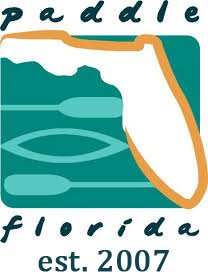The Serene Peace River By Doug Alderson
The Serene Peace River
By Doug Alderson
Excerpt from Florida’s Rivers: A Celebration of Over 40 of the Sunshine State’s Dynamic Waterways by Doug Alderson, published by Pineapple Press in 2021
“The history of the Peace River Valley of Florida in the nineteenth century is a tale of violence, passion, struggle, sacrifice, and determination. It was written with the lives and deaths of Creeks and Seminoles who refused to surrender their independence; of runaway slaves and fierce black warriors; of white frontiersmen struggling to build a better world for themselves and their families; of men and women who supported the Confederacy and their brothers and sisters who would not abandon the Union; of settlers from the defeated South and, later, from the North and Midwest; and of freedmen and women who suffered to overcome the shackles of slavery, who farmed, who built the railroads, and who toiled in the broiling heat of open-pit phosphate mines.” Canter Brown, Jr., Florida’s Peace River Frontier
Serene and generally slow-moving, the Peace River—known as “Rio de la Paz” on old Spanish charts—emerges from the Green Swamp and flows more than 100 miles past largely undeveloped shorelines. Calusa Indians once utilized the waterway in large numbers, especially the lower stretches near where the river meets the Gulf, and Seminole Indians called the river home in the 1700s and early 1800s. They named the river Tallackchopo, “The River of Long Peas,” after the wild peas that were abundant along the riverbanks.
Numerous creeks such as Saddle Creek, Paynes Creek, Joshua Creek, Shell Creek, and Horse Creek feed the Peace River. High banks, islands and stately live oaks make for outstanding scenery around each bend. Considered more of a blackwater river than its alluvial cousins in the Panhandle, the Peace River is nonetheless one of Florida’s major rivers in terms of history and ecology. Its basin is known as the Peace River Valley, one that covers 2,300 square miles.
Fossils are what draw many to the Peace River. After obtaining an inexpensive state permit, fossil hunters scan the shorelines and river bottom below Wachula, searching for ancient shark teeth and bones of prehistoric animals such as dugongs, an ancestor of the West Indian Manatee. A prized find is a megalodon shark tooth which can reach lengths exceeding five inches. These marine creatures date back to the Miocene Epoch five million to 26.5 million years ago when Florida was under water. But it was this oceanic past that would ultimately impact the Peace River more than anything else.
In 1881, Captain J. Francis LeBaron discovered rich deposits of phosphate near Arcadia, phosphate being an essential component of fertilizer. Phosphate was formed millions of years ago when the dissolved phosphorous in seawater solidified and combined with the remains of marine animals and plants. Several phosphate mines sprung up soon after it was discovered, with men using picks and shovels, and even the bed of the Peace River was mined. Today, the ribs of early wooden barges that once carried phosphate still line the shores in the middle river.
As mining became more large-scale and mechanized, the area’s water table was impacted, causing the upper river to dry up at times. In 1950, mining was also responsible for drying up a popular swimming hole in Polk County near Bartow, Kessingen Spring. Today, the spring simply resembles a shallow, dry sinkhole. Mine restoration efforts may help to restore a portion of water flow to the Peace River, and some dream of one day recovering Kessingen Spring.
After its long journey, the Peace River empties into the massive Charlotte Harbor where it mingles with Gulf waters and the Myakka and Caloosahatchee Rivers. Author Canter Brown Jr., who wrote a comprehensive history of the river, sums up its current appearance and condition: “For much of its length, Peace River passes through a portion of Florida still rural, and even remote, late in the twentieth century. In its upper reaches the land is scarred by huge open pit phosphate mines, while farther to the south cattle still graze on the prairies through which it flows. No great metropolises line the river’s banks and no commerce passes along its waters, but once, less than two centuries ago, the Peace River witnessed events that brought the dynamics of history into play in South Florida, and the Peace River bent and molded those events into this story.”
